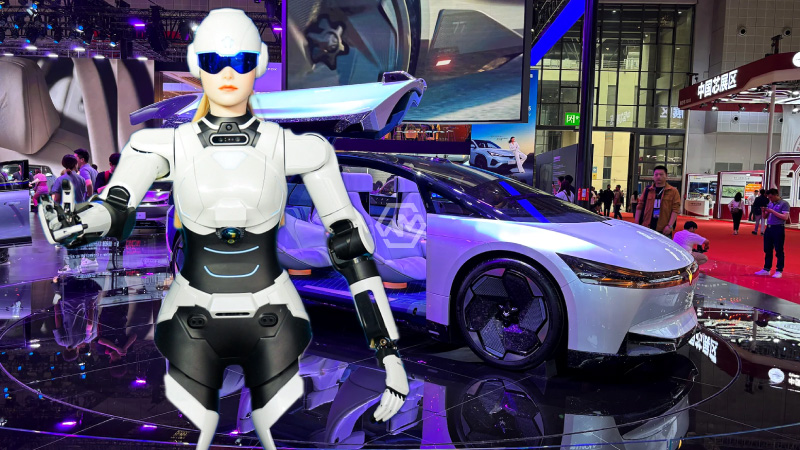- XPENG’s humanoid robot Iron captivated audiences with AI-powered human-like interactions.
- Huawei, BMW, and Volkswagen advanced AI integration in next-gen vehicles.
- ChangAn, XPENG, and Zeekr showcased global ambitions and future mobility tech.
At Auto Shanghai 2025, the lines between automotive and robotics blurred. This occurred as XPENG introduced Iron, a humanoid robot designed with lifelike movements and the ability to converse. It uses shared AI systems found in XPENG vehicles.
Meanwhile, automakers like BMW and Volkswagen are rapidly localizing innovation by partnering with Chinese tech firms. From AI-powered driver assistance to in-car digital ecosystems built with ByteDance and Alibaba, global players are customizing smart features for the Chinese market. This signals China’s role as the technological heartbeat of global automotive transformation.
Auto Shanghai 2025: The Smart Revolution Rolls In
Huawei made a strong showing with its Harmony Intelligent Mobility Alliance. They unveiled smart EVs and new HIMA brand partnerships. Its tech now powers over 700,000 vehicles and offers intelligent cockpits, adaptive driving systems, and cloud-connected experiences. This reimagines the modern car as a mobile smart device.
Zeekr’s 9X hybrid turned heads with its 2.0T engine delivering 275 horsepower and cutting-edge CATL battery offering a 380-km range. With rapid acceleration and performance enhancements, Zeekr is eyeing global premium markets by combining speed with sustainability.
ChangAn impressed audiences by demonstrating its three strategic pillars—new energy, smart systems, and global outreach. They unveiled flying cars, robot dogs, and smart exoskeletons. The company emphasized its dedication to R&D and green technology, offering a futuristic vision of mobility.
XPENG and NIO also highlighted their global ambitions, announcing plans to expand to over 60 and 16 markets respectively. Their strategies reflect a confident push by Chinese automakers. They aim to influence electric and smart mobility trends not just locally, but worldwide.
Auto Shanghai 2025 made one thing clear: the future of mobility is no longer confined to just cars. It’s about intelligence, integration, and a global vision driven by China’s tech momentum.
“The future is already here — it’s just not evenly distributed.” — William Gibson
→ Auto Shanghai 2025 reveals that in China, the future of mobility is not only present—it’s accelerating.



